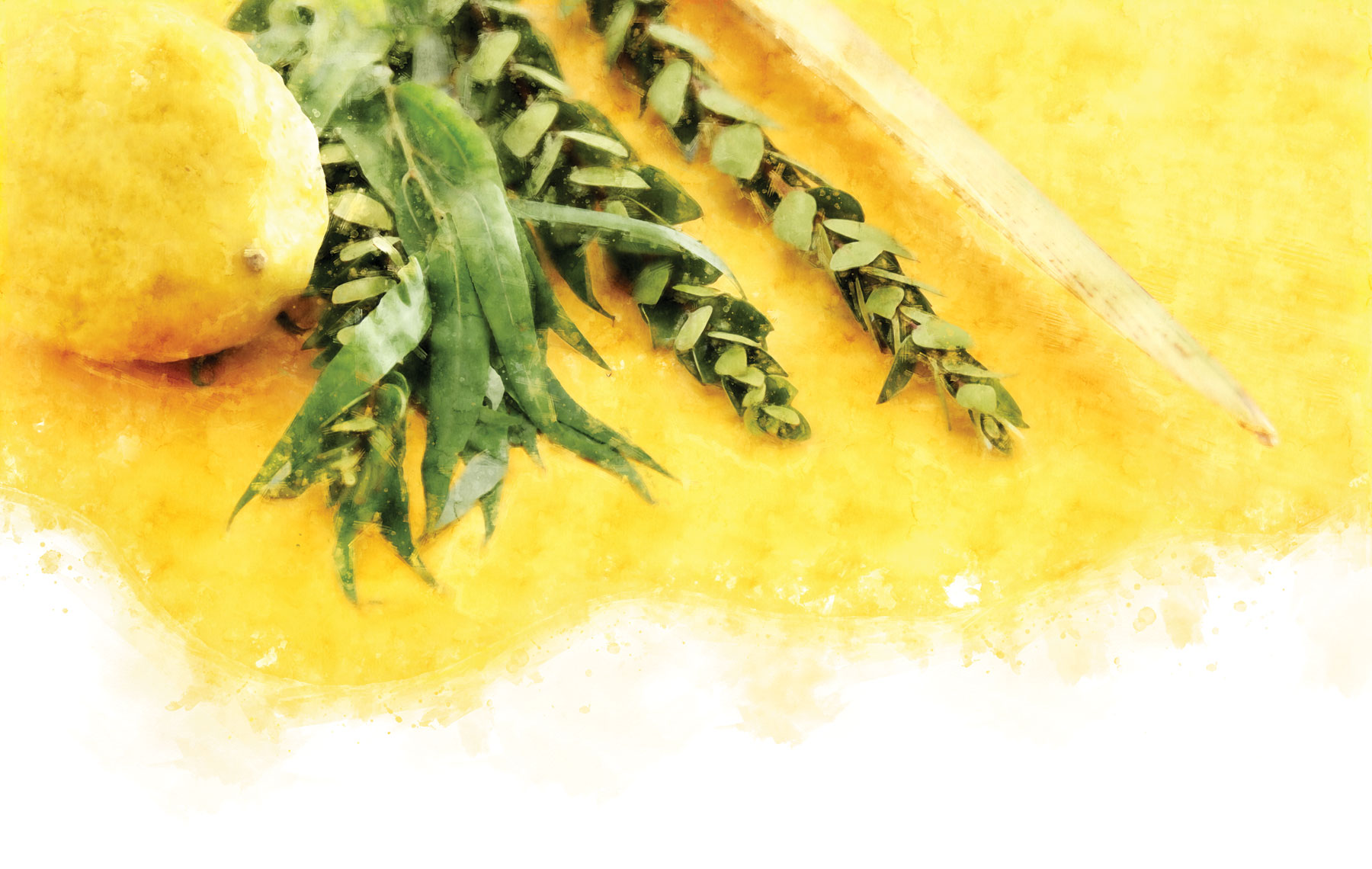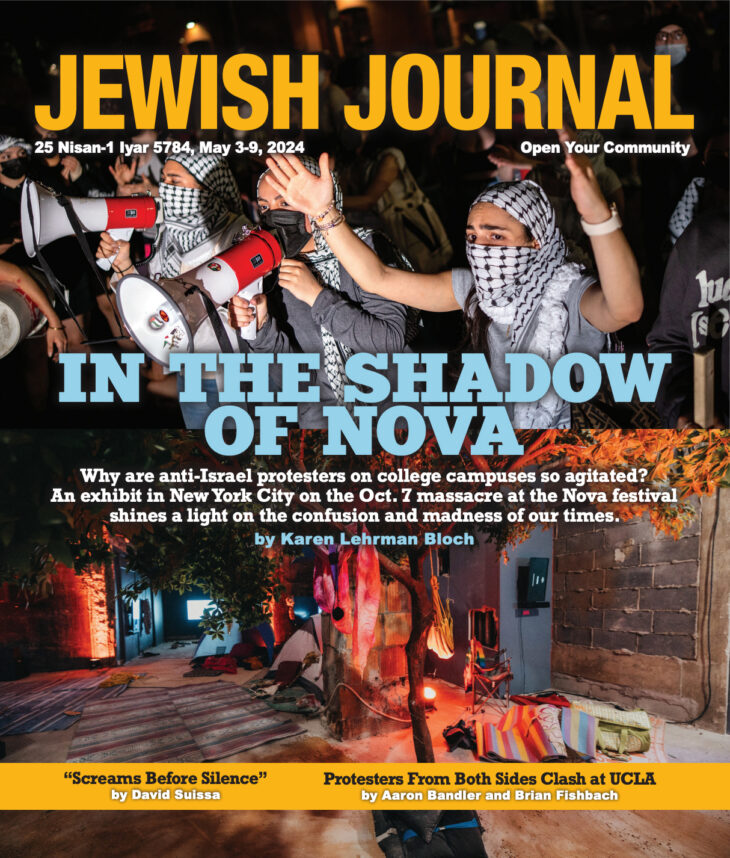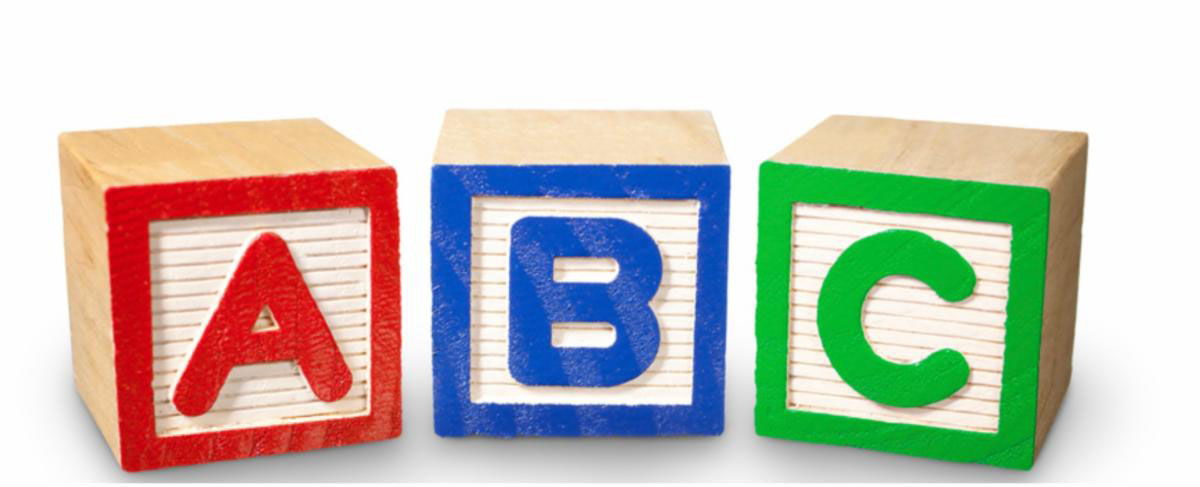
When you weave through the clumsy or wonderful (depending on your religious identity and aesthetic) accoutrements of Sukkot, when you observe every ritual and say every word, you can reduce this once-humble biblical holiday, now a massive logistical and financial observance, to the following: Be aware, grateful and truly in awe for the shelter above your heads. All else is commentary.
My Sukkot story, and my connection to rituals and observances both beloved and confounding to me, is a somewhat meandering one. In retrospect, the moment that reinforced to me the importance and wonder of this holiday is the same moment that taught me my childhood family sukkah was most likely unkosher — perhaps retroactively invalidating (at least from a halachic/legalese perspective) all the moments our family tried to sanctify Jewish time by eating and being there.
It is on Sukkot — and really, only on Sukkot — that the Torah actually commands joy.
The year was 1985 and I was in eighth grade. Hurricane Gloria bore down on New England and took nearly direct aim at southern Connecticut. Predictions indicated my hometown, Woodbridge, would get walloped. Gloria made landfall on Sept. 27. On the Hebrew calendar, that was 12 Tishrei, two days after Yom Kippur and three days before Sukkot. By the time Gloria hit, our sukkah was on our back porch. I remember being in the kitchen when some combination of a lightning strike and powerful winds split the twin oak tree in our backyard. One of the “branches” of the “Y”-shaped tree broke off and flew toward our kitchen while I was watching. It landed inches from our home.
In that part of Connecticut, most homes’ water comes from wells that run on electricity. We lost electric power for eight days, which means we had no running water. We had to drive 15 minutes to my father’s office or to a local community center to use the bathroom or shower. I remember an hourslong drive with my father in search of a single bag of ice to keep food fresh in our cooler. Price-gouging elevated by tenfold the cost of the bag we finally found. While I was relieved, not to mention fortunate, to still have a roof over my head and abundant non-perishable food in the cabinet to eat, it was the first time in my life I felt vulnerable and exposed. It also was the first time I was aware of how reliant I was on societal systems we too often take for granted.
We should be joyful we made it through the crucible of the Days of Awe.
All this meant that even as a 13-year-old, I had instant and poignant identification with the Israelites in the desert, whose protection and very roofs are what we commemorate, and celebrate, as we Jews put up the very temporary booths of Sukkot. Jewish law commands that for the eight days of the holiday, we exit our permanent dwellings to re-create (without truly exposing ourselves to the elements as our ancestors did) the experience of our forebears in the desert. Some observe this by eating all meals in the sukkah. Some go further and do most if not of all the things one would normally do in one’s house, such as read, play, sleep and entertain guests, in the sukkah. On Sukkot, the permanent, the stable and the firm yield to the temporary, the vulnerable and the flimsy. In 1985, thanks to Gloria, I learned the truth of Sukkot.
Despite and because of the hurricane, that Sukkot was the best, and certainly the most memorable, Sukkot our family ever celebrated. It was not until nearly 10 years later, when studying in a yeshiva and learning the minutiae of the laws of the holiday, I learned that while a kosher sukkah should be able to withstand a ruah m’tsuyah, or common wind, it ought not withstand a ruah lo m’tsuyah, an uncommon wind. Why? The structure is intended to be flimsy enough that its inhabitants are in touch with their vulnerability in nature. Yet, it if is stable enough to remain standing after a hurricane, it must not be flimsy enough. Our sukkah remained standing. Which means it was halachically unkosher.
Sukkot can expose, and distinguish, which seemingly odd things we are willing to do for our religion, for our God.
At the time, I didn’t know. Even if I knew, I’m not sure I would have cared. Sukkot that year was rich, even as it reinforced how vulnerable we all are to being instantly impoverished. All we had to cook on was a gas grill. Somehow, my mother was like a magic genie with that simple appliance. We had guests to our sukkah every night and served sumptuous meals. The brownies I cooked in a Pyrex dish on the grill were overly crispy at the bottom but chocolatey and delicious. For a week, the holiday’s ancient origins and contemporary overlap with a natural disaster could not have been more apt. We were raw, yet we created joy. We wondered about God’s protection. We beckoned God, along with biblical and modern guests, into our not-so-temporary booth. I was angry at Mother Nature but more connected to her than I had ever been.
One does not need a near catastrophe for Sukkot to matter in a deep way. The holiday is one of our most tactile observances. So many of the senses are stimulated, from the redolent odors of the four species we wave as part of the lulav/etrog ritual to the sacred blisters, splinters and pokes we suffer as we try to harvest loose greenery for the roofs of our sukkah. (While the all-too-easy bamboo mat is kosher and ubiquitous, no self-respecting New Englander would cover a sukkah with anything other than that which was present in nature.) I learned to operate an electric screwdriver while putting up my first sukkah as an adult, and a significant percentage of my personal trips to Home Depot relate to this holiday. Sukkot is a celebration of hands and olfactory bulbs, and pushes sedentary project-averse Jews to be intrepid DIYers.
Sukkot also may push against our sense of what is normal. Sukkot can expose, and distinguish, which seemingly odd things we are willing to do for our religion, for our God. A member of my first congregation (let’s call her Nancy) in upstate New York was a regular on Shabbat, at the weekday services we held on Rosh Chodesh and the intermediate days of Sukkot and Pesach. During every day of Sukkot services, there is a processional referred to as “hoshanot.” One Torah scroll is removed from the ark and held at the bimah. The rest of the congregation marches around the bimah while holding lulav and etrog, and reciting a liturgical poem. For years, Nancy volunteered to be the one to hold the Torah. Every single time. She never joined the processional, nor did I see her participate in shaking the lulav/etrog during its traditional spot in the service. One day, I asked her, “Nancy, why don’t you join in the hoshanot or shake the lulav? Someone else can easily hold the Torah the next time, if you’d rather participate in the circular perambulation!” She responded, succinctly, rationally and compellingly: “Rabbi, I love my Judaism. And the rituals. But I have limits. And I don’t wave fruit.”
Nancy’s response makes sense as it speaks to the odd yet wonderful zone where rational, modern aesthetics and culture hit up against primal, ancient and retro ritual. Think bris. Or blowing the shofar. Or tefillin. Or any Jewish ritual that, if viewed by an outsider, might seem bizarre at best — archaic or cruel at worst. The nexus of the ancient and the modern invites us to cross that threshold over and over again.
Theology plays a part, too. If I believe God specifically expects me to perform a specific act, then the act’s bizarre quotient is mostly irrelevant. If I have a relationship with God, even a commanding God, but I doubt whether a divine being or reality really cares about punctilious observance, then a ritual’s oddness might carry more weight in my decision. For some, even in that second category, the more primal the ritual, the more authentic and spiritually pleasing it might feel — be it hanging a mezuzah on a doorpost or waving fruit in the autumn. For others, rituals that hearken back to an agricultural era from which we are almost comprehensively (and, perhaps, tragically) divorced and which are not seen to be directly appeasing the Almighty might fall by the wayside.
I understand the reticence that those who don’t hold an absolutist theology regarding the provenance of Torah and its commandments have toward some aspects of Sukkot and other Jewish rituals. However, I — a modern, American, traditional-while-progressive rabbi who believes that the greater import one puts to any individual ritual act, the smaller one’s notion of God must be — am in love with Sukkot. Nancy’s hesitations understood and notwithstanding, I believe Sukkot has much to offer the individual Jew, the Jewish community and society at large.
In preparing to write this story, I spoke to many friends and colleagues about their Sukkot associations. What draws them to this holiday? One of them praised the holiday for pulling the individual Jew back into relationship with the natural world, its bounty and splendor, along with its terrible power. A simple review of news headlines would highlight how relevant such a holiday could be. A colleague who grew up in Chicago and now lives in L.A. focused on exposure to frigidity by Lake Michigan, and wishing air-conditioning was commonplace in the SoCal sukkah. In other words, if you lean into Sukkot, you cannot escape your locus on this earth; you are exposed, and connected, to your world.
Another mentioned Sukkot is a mitzvah that breeds other important mitzvot. She spoke about the satisfying sense of accomplishment in erecting the structure from scratch. That satisfaction builds a stronger investment in having guests to that sukkah, to help celebrate the achievement. So following the Torah’s command to build a hut galvanizes the obligation to hakhnasat orchim, welcoming guests to our abode.
Why is Sukkot so special? For all of the reasons above. And for at least one more: It is on Sukkot − and really, only on Sukkot — that the Torah actually commands joy.
One of Sukkot’s nicknames is “z’man simhateinu,” “the time of our rejoicing.” We should be joyful we made it through the crucible of the Days of Awe. Joyful we withstood the intensity of self-reflection and hopefully achieved a form of self-renewal. The holiday can be, and should be, fun. And why shouldn’t religious life be fun?
But there is an aspect of the simcha/joy commanded on Sukkot that deserves attention. The Torah issues a two-word command to be joyful: v’hayita sameach. Yet, it adds a short word between those two that is hard to translate: “ach.” Some translate this word as “but.” What does that little word add to or subtract from our Sukkot joy?
This Sukkot, leave your home. Observe the huts. Bring joy to others — those you know and those you do not.
My friend and teacher, Rabbi Barry Dov Katz, interprets that little “ach” as a reminder that joy is never perfect. Even if ours is, momentarily, a Sukkot-based joy obligates an awareness that others’ don’t have that same happiness. While in the process of writing this story, a sukkah went up adjacent to our synagogue’s property. No, it was not some overly eager Jew erecting the obligatory booth weeks before the holiday. This “sukkah,” humble and bent-over like its occupant, was put up by a homeless person in our neighborhood. Our schach, made of bamboo or palm fronds, are symbolic roofs. This person’s schach, made of a weathered blanket and some cardboard boxes, was an actual roof. Our sojourn in the sukkah is temporary, somewhat ersatz, exposed to the elements — but only somewhat. This person’s sukkah was an actual dwelling. Our sukkah is a short-term downgrade in our domiciles. This person’s sukkah was likely a hard-earned upgrade from sleeping on a bench with no covering.
Our sukkot are filled with joy. But because so many others in our world, in our city, in our neighborhoods, likely would surrender everything they own to live in a sukkah full time, our observance of sukkot must be filled with mitigated joy.
Could such lessons be learned without kids’ decorations, ubiquitous paper chains draping the walls and recitations of the blessing leshev basukkah, referencing the commandment to dwell in the sukkah? Yes. Could our societal awareness, including the gaping delta between those who have and those who have not, be properly agitated without myrtle twigs, willow branches, citrons and palm fronds? Without a doubt. Do we still need Sukkot in our religious and human consciousness, observing it in such a way that returns us to the world that birthed us all, and which still damns so many of our brethren? I think we do.
This Sukkot, leave your home. Observe the huts. Bring joy to others — those you know and those you do not. Generate a hurricane of care, so powerful it can knock down the heartlessness in our society. See, feel and touch why Sukkot matters.
Rabbi Adam Kligfeld is the Senior Rabbi of Temple Beth Am in Los Angeles.





















 More news and opinions than at a Shabbat dinner, right in your inbox.
More news and opinions than at a Shabbat dinner, right in your inbox.